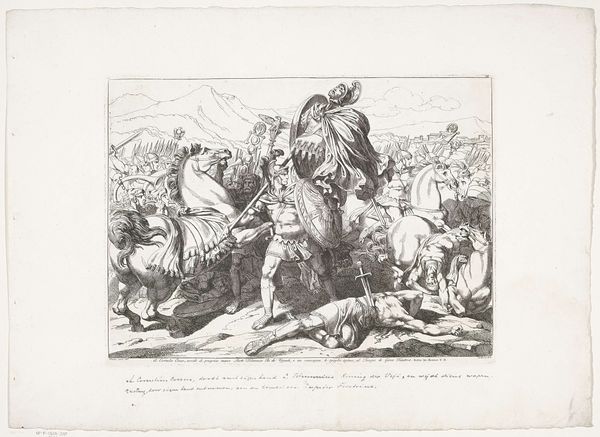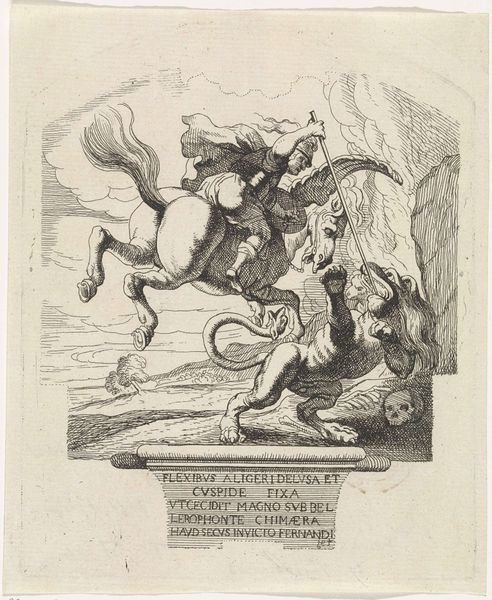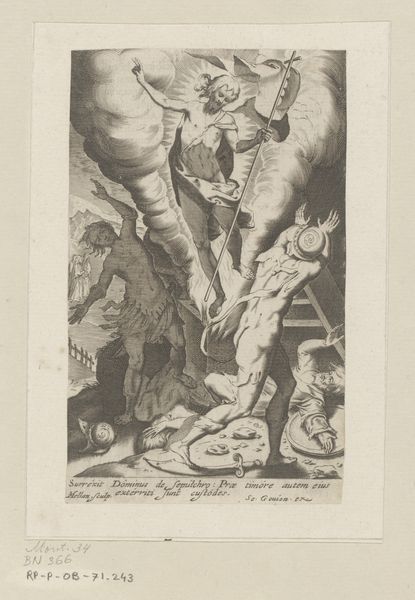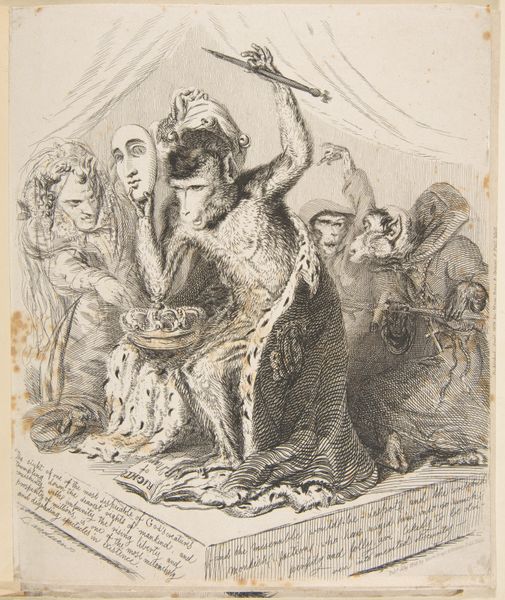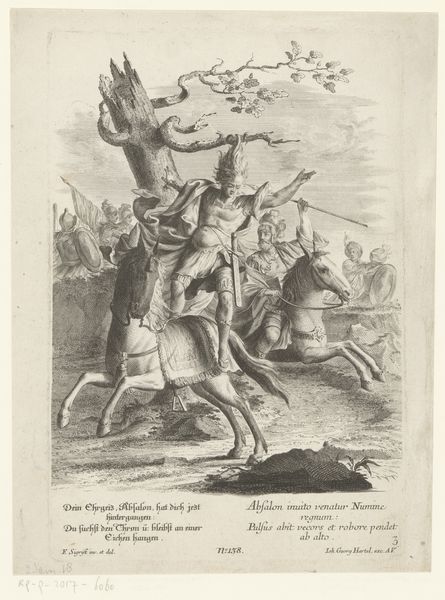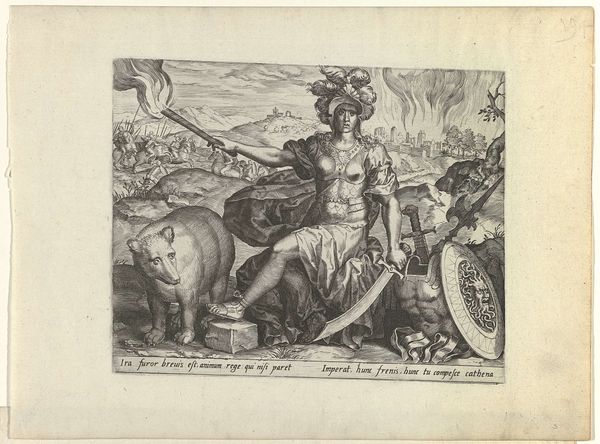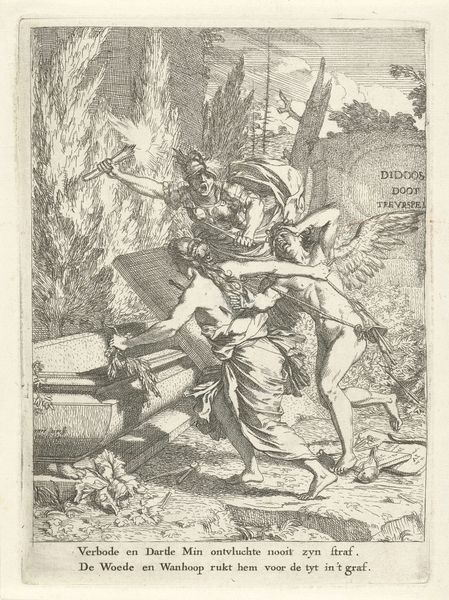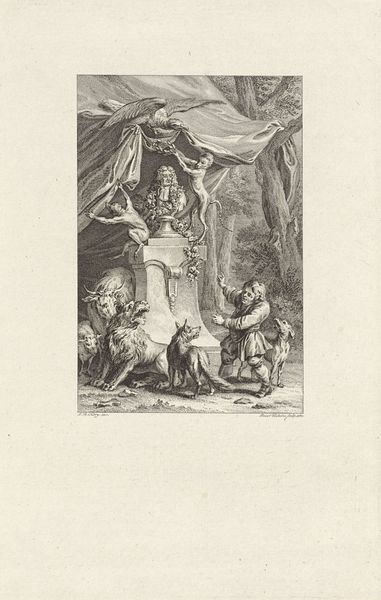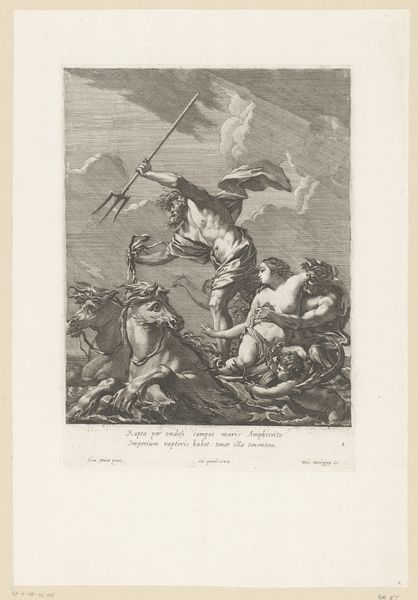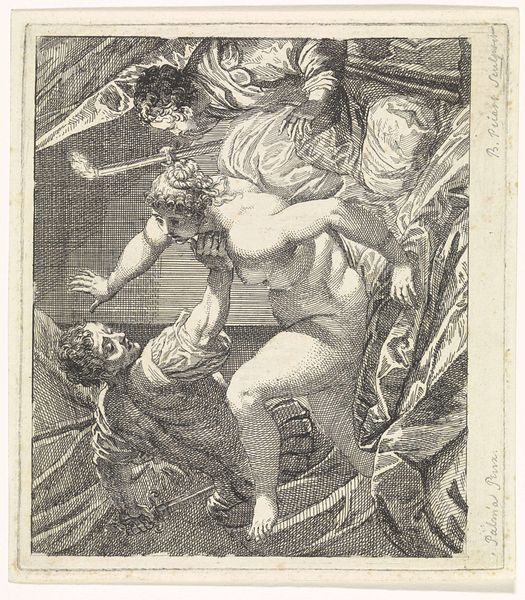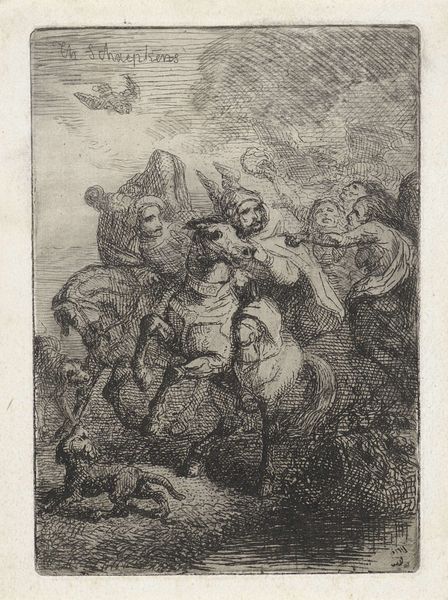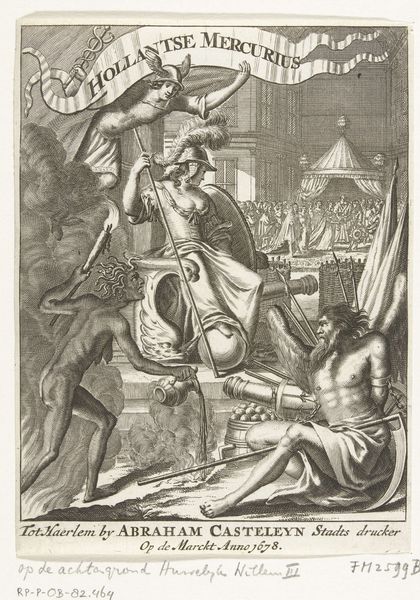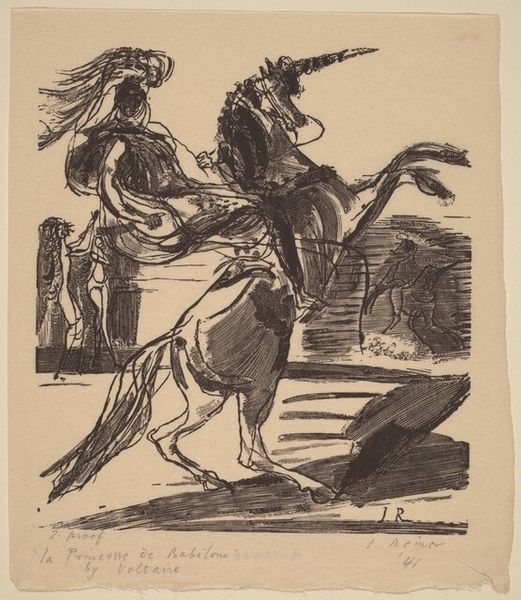
drawing, print, etching, engraving
#
drawing
#
narrative-art
# print
#
etching
#
figuration
#
soldier
#
pen-ink sketch
#
horse
#
history-painting
#
engraving
Dimensions: sheet: 5 1/4 x 3 11/16 in. (13.3 x 9.4 cm)
Copyright: Public Domain
Curator: Oh, the drama! It's just so visceral, isn't it? A feeling of immediate chaos erupting from this small rectangle. Editor: Absolutely! It's incredible how much energy is packed into this etching, "Marcus Curtius," dating from sometime in the 17th century, now at the Met. It was made with engraving. Talk about the public role of the artist. Curator: Yes, there's a story surging right through it! It reminds me of some reckless dream or fevered myth... a figure plummeting into a hell mouth or the fiery core of things. I almost want to lean away. Editor: This drawing depicts the Roman legend of Marcus Curtius, a soldier who sacrificed himself by riding his horse into a fiery chasm to save Rome. The chasm had opened mysteriously, and oracles said Rome would fall unless its greatest strength was thrown into the abyss. Curtius, personifying Roman strength, took the leap. A real visual propaganda that highlights virtue. Curator: Virtue through annihilation! A strange concept to champion, though... I wonder if the artist truly grappled with that paradox... maybe the piece could explore themes around duty versus futility in civic sacrifice. It makes you question the powers being served by so called patriotic martyrdom, doesn't it? Editor: Precisely, because prints like this circulated widely, influencing perceptions of history, heroism, and civic responsibility. The composition, with Curtius at the visual center, turning tragedy into spectacle, clearly shows that he embodies something, as opposed to feeling loss. And with the medium, it’s much easier to do and spread around with engravings versus trying to display it through paintings alone. Curator: So interesting how something rendered in fine lines, through sheer dynamism, can capture such colossal and terrible weight! What’s being asked and asked and asked in the making? What does that legacy say for us now, on both individual and institutional scales? What should be, for real? Editor: It encourages us to consider the relationship between art, power, and belief. How are our perceptions of "heroes" being crafted and pushed onto us? It really showcases the potent force imagery had within society.
Comments
No comments
Be the first to comment and join the conversation on the ultimate creative platform.
